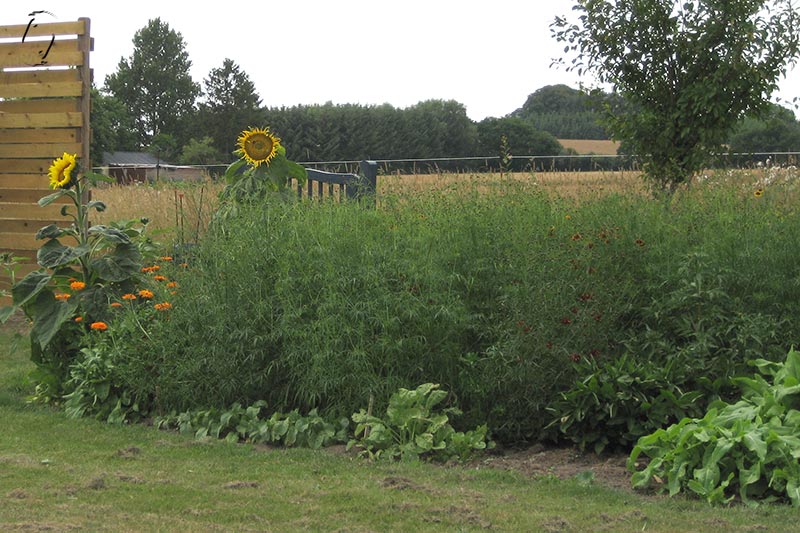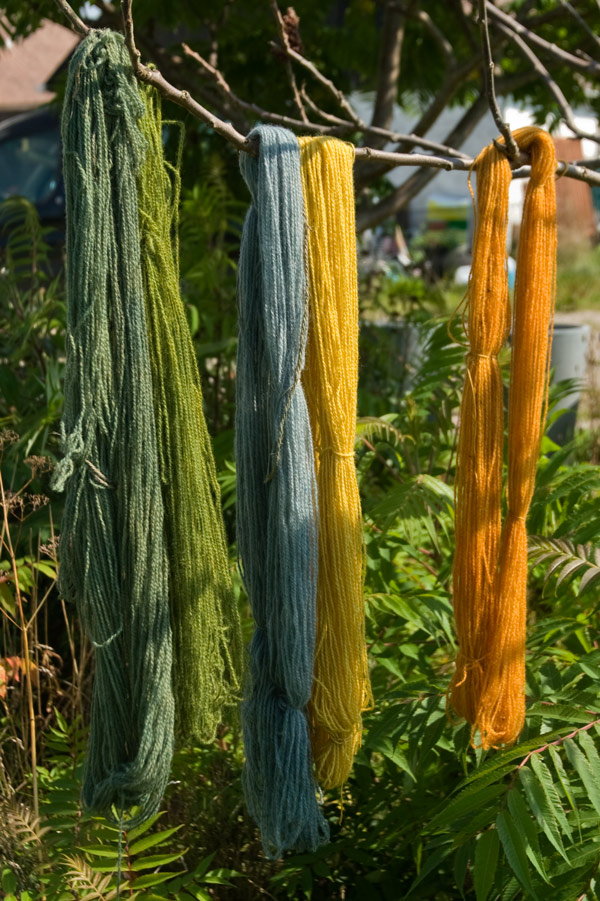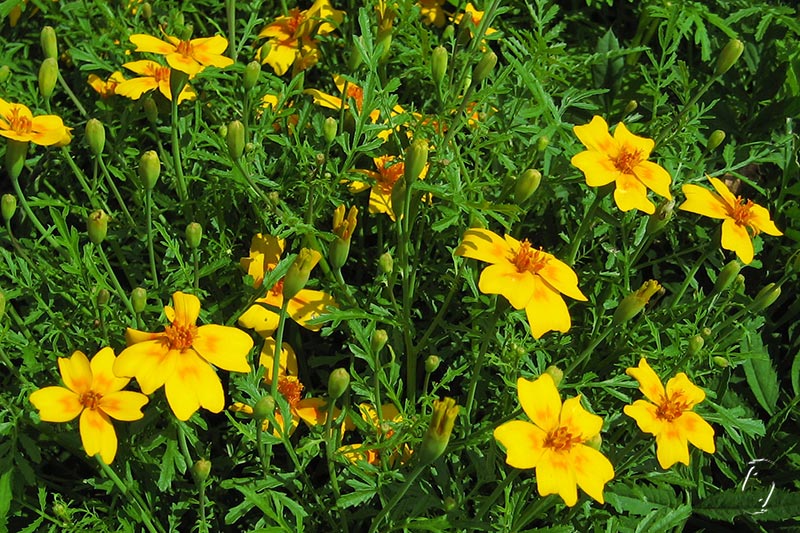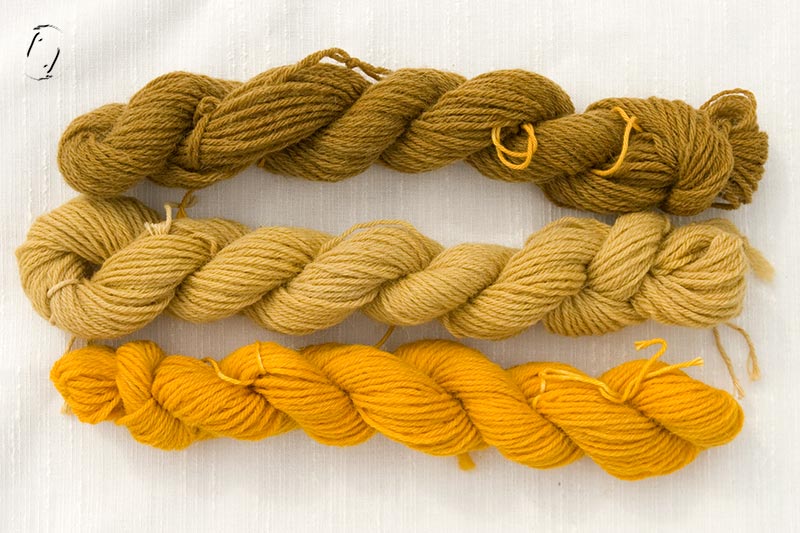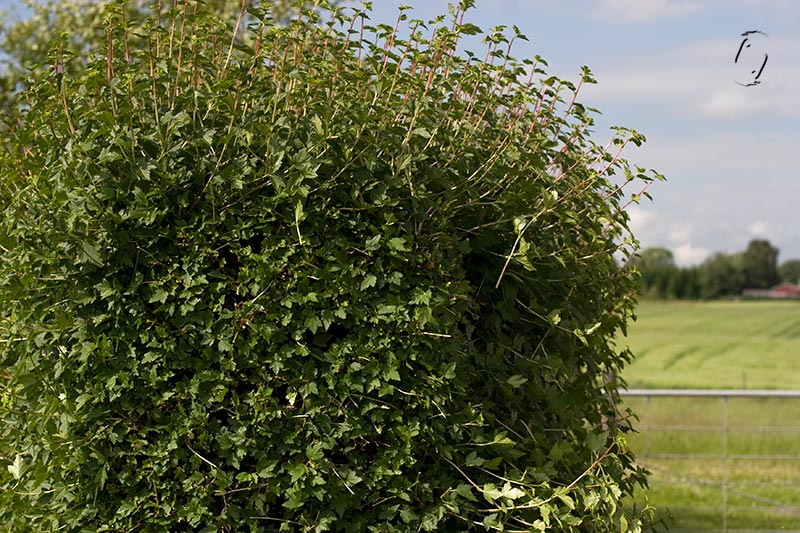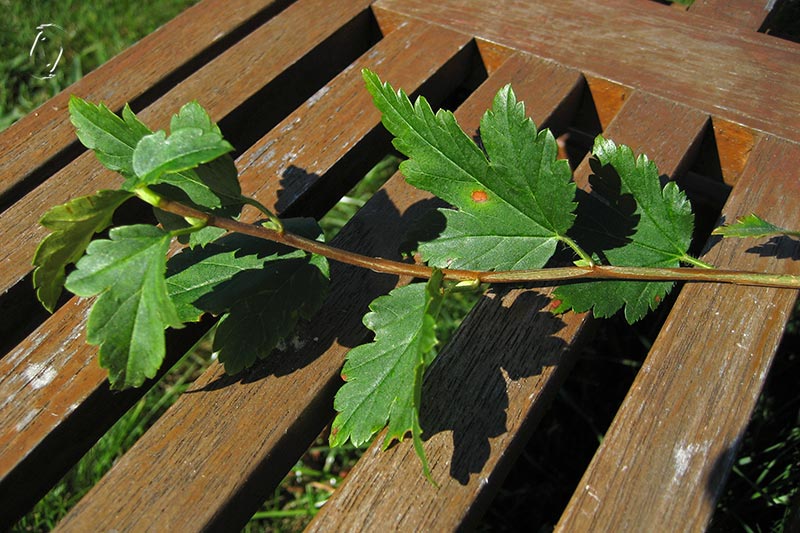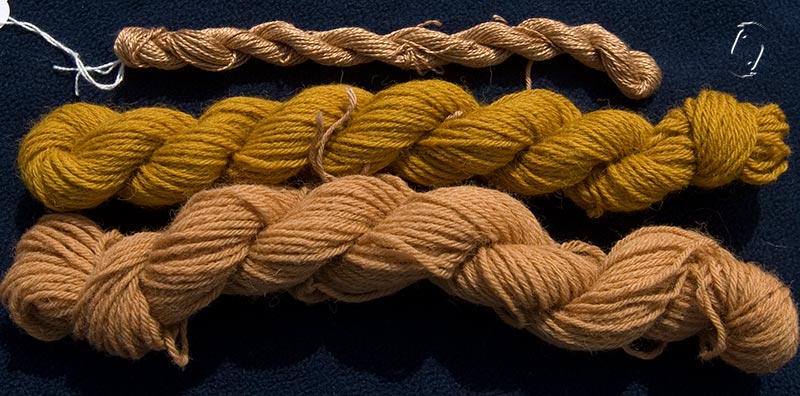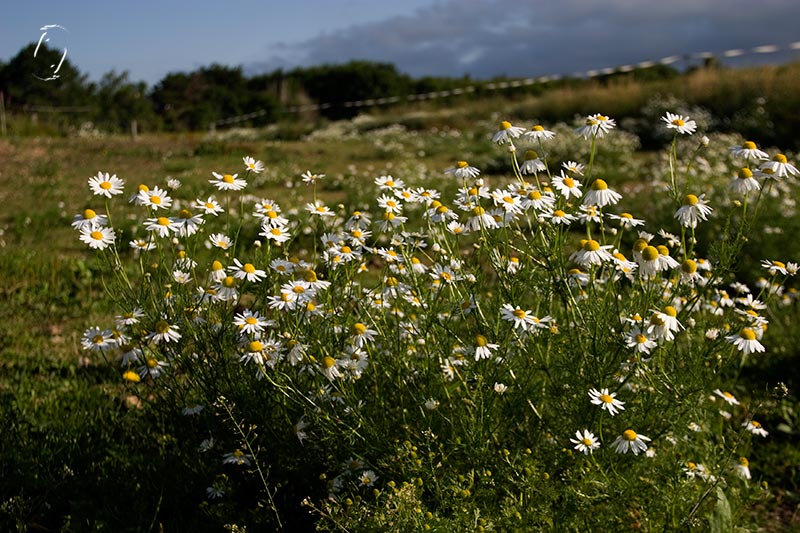
I’ve been dyeing several sets first with flowers only and one set with whole plants. A “set” refers to the method where you dip one skein for 5-20 minutes, take it out, enter another for an hour, then a third until it cools and finally reheat with a fourth. This supposedly gives you green, red, brown and yellow.
For me, the green is certain, no matter the contents and the dye temperature, the 2nd unmordanted skein is also a sure beige no matter what I do! No red whatsoever apart from a pinkish orange skein of silk in a dyebath of its own.
For thirds I got both yellow and green, the last skeins were a beigey orange.
I used “equal dyestuffs” in the sense that if I had 4 x 25 g of wool I used at least 100 g of flowers. When I get to the last bath, the solution is very weak.
At first I thought I missed the point where you “take out the 2nd skein when it’s red” because I went outside to pick black currants. Way too many things happening at once, I had 4 different dyepots going that day and really needed to get out of the house rather than watch them – and well, the book did say 1 hour! But after trying new batches, watching them like a hawk, all I can say is, my plants with my water = beige on unmordanted wool. No matter if you pop it in first, even.
But I still got several different shades from one dyebath, and I plan to overdye the lookalikes. Woad?
Firsts:

Seconds:
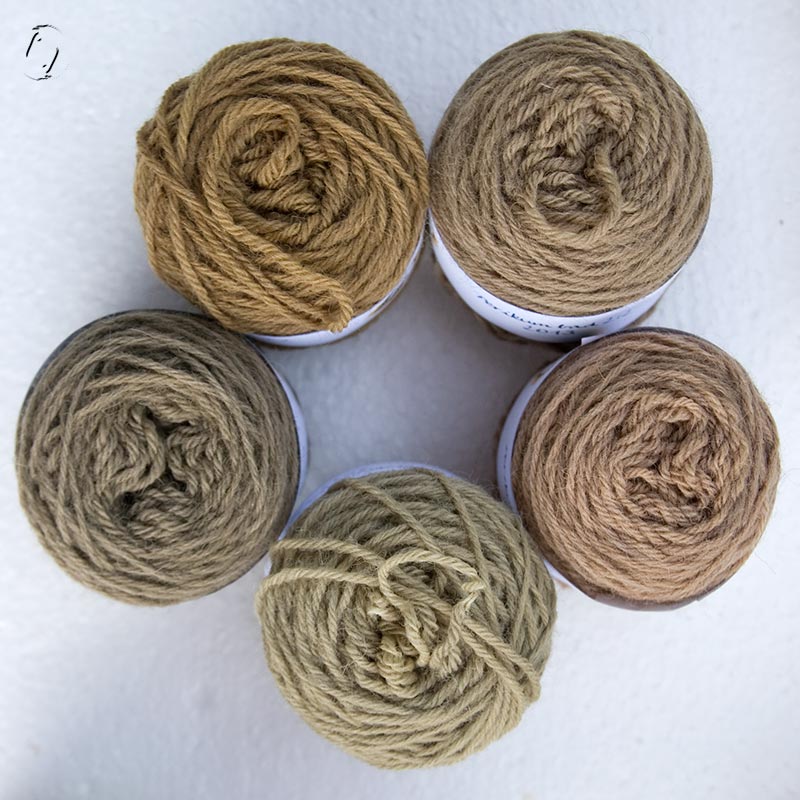
Thirds:

I added silk to see if they behave the same way as wool. That would give me – or you – the option of dyeing small amounts of yarn if you can only find a few flowers, each skein is only about 3 g. I forgot to put in a 3rd silk skein, so didn’t bother with a 4th, but when I repeated the experiment, I skipped the first 2 and then popped one in the 3rd. The wool results weren’t the same on each set, but in any case it doesn’t look like the silk will take any green or yellow from this plant. The one on the bottom is the one I did alone, it’s more orange than shows, but silk is very hard to photograph. It’s either extremely shiny or not at all.

.
I have so many plants now that I could do several experiments. One of the advantages of letting farmland grow wild, all these interesting plants appear just like that. Our neighbours think I’m nuts, especially because I won’t let them “help me” use my land to make profit (for themselves). But I’m really fed up with everywhere being so trimmed, polished and streamlined, every bit of land either filled with monocultures or asphalt. The deer LOVE my tall grass pasture. They have babies in it.
Since you can dye with the whole plant as well – some do the same sequence that I described above, or you can just do the usual mordant then dye procedure, I had to try that too, obviously. I read here and there that people dry the plant and use later, the books mentioned above say that this won’t work with the flowers. I’ve only tried saving the flowers in alcohol.
So I cut some reasonably youngish and fresh plants and tried to simmer them to get the same wonderful red. Close to 200 g, much easier to get enough obviously.
The first skein turned a brilliant yellow in the first few minutes, and while I was deciding that I wanted to keep that and to see what came next, it was already turning greenish. Took it out and broke the sequence, I added not only the unmordanted-destined-for-beige, I included a mordanted skein too, since the dyestuff ratio was so much higher, and, well – still beige, and another green. It’s a LOVELY green, and with a bit of modification I see lots of possibilities
Since the 2nd skeins are all so dull, I’m wondering if I can use the same skein for that over and over, or, simply use this plant for green and skip the other stages.
I also feel extremely clever (not), because it turned out that I’d used the tin mordanted skeins (which I normally reserve for madder) in the last 2 experiments. Doh. Not that it made any difference probably, but still, not exactly correct procedure.
I think next year I’ll just pop new skeins in every 5-10 minutes, all mordanted, and see how far it goes. One thing you could also do is put one in and get it out as soon as it’s yellow, a few minutes only, then another for green. Or together, and leave one in longer.
This is one of the things that facinates me about plant dyeing. Some respond to changes in pH or temperature, others don’t care if you boil them, soak them – they just give the same every time. Some will change in minutes being dunked in a pot of rusty water, others have to be heated with the iron to change and again, some don’t change at all. So if your usual method doesn’t work for a new plant – try changing your method before you “give up” or conclude anything.
So I decided on one last experiment. Getting my third “last skein” in a weak salmonpeach colour, I left it in the dyepot and added MORE plants, which I then reheated, then took off the stove and left there to cool. So what would YOU expect to get? Green? Brown? Mucky fawn? Indeed, what I got was: nothing. It looked exactly the same as before I added the new plants. Which in itself is interesting, except that I now have 3 skeins of absolutely no value except perhaps if I want to crochet a doll with a sickly face colour.
Fourths:
- Image a bit dark – look below for proper colour
Perikonblomster
Jeg har så mange perikonplanter på engen efterhånden, at der er rigeligt blomster til at få testet den specielle metode med at farve i sekvenser. Teoretisk set skal man kunne få både grøn og rød fra samme gryde, men den røde er godt nok en anelse genert. På uld får jeg grøn, brun, gul og orange, på silke sådan en slags rosa-beige i forskellige nuancer.
Jeg gjorde fem forsøg med 25 g uldbundter og 3 g silke i hver sekvens. Ca. 100 g plante i hvert forsøg, eller 50 i det tredje hvor jeg kun farvede 2 fed. Det femte sæt var med hele planter, de fire første kun med blomster.
Det pudsige er, at når man laver snaps, er farven jo rød, men når man koger blomsterne alene, bliver badet mere brunligt. Så jeg blev ret overrasket, da et prøvebad med en hel plante blev flot rubinrød! Så jeg måtte lige teste et blomsterbad mere uden kogning, det blev sådan nærmere rødvinsfarvet.
En sekvens har 4 stadier. Når man har simret blomsterne en times tid og siet dem, kommer man 1 fed i gryden 5-20 minutter, det bliver grønt. Næste skal i en time og skulle blive rødt men mine bliver beige eller brune. Tredje fed skal ligge koldt natten over, det første blev gult, anden runde blev lysegrønt. Nr. 4 og 4 blev hhv orange og beige.
Silken i første test blev variende grader af – beige. Jeg lavede så et fed silke for sig selv med en hel plante (den flotte blodrøde gryde), og det blev fint rosa-orange (mere rosa før tørring).
I tredje forsøg lavede jeg kun 2 fed med halvt så mange blomster. Og byttede rundt på rækkefølgen, jeg kom et ubejset fed i først, derefter et bejdset. Den almindelige sekvens hedder bejdset-ubejdset-bejdset-bejdset. Det første fed i runde tre blev som sædvanlig beige, men fik en tur i det rosa silkebad og tog farve af det. Fed nr. 2, det bejdsede, startede med grøn, men jeg lod det ligge i gryden lidt og så blev det nærmest bronzegyldent.
De fire blev altså ikke helt ens, pånær den grønne som er ret pålidelig. Jeg synes selv det første sæt blev det bedste, men det var spændende hver gang.
Når man farver med hele planten, så får man jo lidt mere materiale at arbejde med. Enten farve almindeligt med et enkelt farvebad, eller forsøge hele sekvensen som ovenfor.
Jeg har læst mig til at nogen tørrer planten og med held farver med den senere. Jeg har kun forsøgt med en lille mængde blomster i alkohol, ligesom når man laver snaps.
Fremover dropper jeg det ubejdsede fed og vil prøve at simpelthen hive op og putte nye i hver gang de har taget farve og se hvor langt jeg kan strække den. Det er en af de ting som er så spændende med plantefarvning, man kan ikke bruge samme metode til alle planter. Nogen giver bare det samme hver gang, uanset om det er koldt eller varmt vand, sur eller basisk pH, andre kan ændres på flere måder. Nogen kan nøjes med et kort dyp i en spand med hesteskovand, andre skal opvarmes med jernopløsning for at give farveskift.



